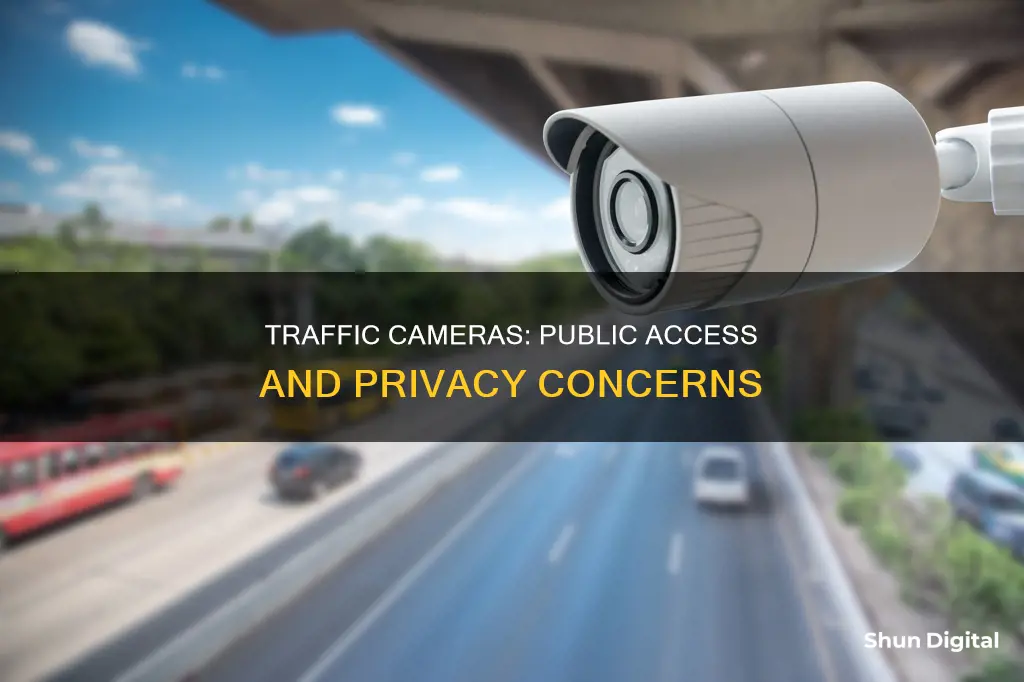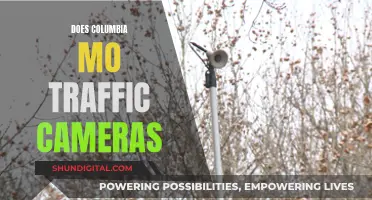
Traffic cameras are an increasingly common feature of modern life, but what are they, and can members of the public access them? Traffic cameras are surveillance devices placed along roadways to capture real-time footage of traffic and related activities. They come in several forms, including fixed cameras on poles, mobile units in vehicles, and specialised cameras for tasks such as red light enforcement. While the primary purpose of these cameras is to monitor and manage traffic flow, enhance safety, and aid law enforcement, they also provide valuable insights for commuters, city planners, and law enforcement agencies.
Accessing traffic cameras has become easier thanks to the development of online platforms and websites. Government agencies often provide live camera feeds and traffic updates on their websites, while traffic monitoring apps offer comprehensive traffic information by aggregating data from multiple sources. Dedicated traffic camera apps are also available for smartphones and tablets, offering features such as alerts and the ability to save favourite camera views. This easy access to traffic camera footage empowers commuters, enhances road safety, and contributes to more efficient and sustainable transportation systems.
| Characteristics | Values |
|---|---|
| Purpose | Monitoring traffic patterns, accidents, poor road conditions, and road safety |
| Availability | Some traffic cameras are available to the public through online traffic monitoring services |
| Data Retention | The duration varies but is often between a few days and several months |
| Data Access | Requires a subpoena or a request to the relevant government agency or private company |
| Privacy Concerns | Yes, there are concerns about individual privacy rights and the potential for surveillance |
What You'll Learn
- Traffic cameras are available to the public through online traffic monitoring services
- The public can access traffic cameras via online platforms and websites
- Traffic monitoring apps provide another way to access traffic cameras
- Dedicated traffic camera apps offer easy access to live camera feeds
- Traffic camera networks provide a centralized platform to access multiple camera feeds

Traffic cameras are available to the public through online traffic monitoring services
Online traffic monitoring services can be accessed through government-maintained websites, traffic monitoring apps, or dedicated traffic camera apps. These platforms aggregate data from various sources, including government agencies, private companies, and crowdsourced information. They offer features such as live camera feeds, traffic incident updates, and road closure notifications. Some apps also provide customizable alerts, map overlays, and the ability to save favourite camera views.
Traffic camera networks operated by government agencies, transportation authorities, and private companies provide centralised access to multiple camera feeds. These networks often have user-friendly interfaces and advanced search capabilities, making it convenient for users to find the information they need. Additionally, some government websites and apps allow users to view red-light or speed violations captured by traffic cameras.
To access traffic camera footage, individuals may need to submit a request to the relevant authority. In some cases, a subpoena may be required to obtain the footage. The retention period for traffic camera footage varies, with some cameras recording continuously while others are activated by specific events. It is important to act quickly when requesting footage, as older data may be erased after a certain period.
By leveraging online traffic monitoring services and accessing traffic camera networks, commuters can stay informed about real-time traffic conditions. This empowers them to make better travel decisions, avoid congestion, and contribute to more efficient and sustainable transportation systems.
Focusing on the Right Things: Choosing Your Camera Focus
You may want to see also

The public can access traffic cameras via online platforms and websites
Traffic cameras are an increasingly common feature of modern life, and members of the public can access them in several ways. The public availability of traffic cameras is a divisive issue, with some people arguing that they infringe on privacy, while others highlight their role in improving road safety and reducing accidents. Nevertheless, traffic cameras are becoming more common, and the public can access them via online platforms and websites.
Government websites are a primary source of traffic camera footage. Agencies responsible for transportation management often host live camera feeds, traffic condition updates, and information on road closures and construction. These websites are a valuable resource for commuters, providing real-time insights into traffic patterns, congestion, and potential hazards. Additionally, government websites may provide archival footage of traffic violations, which can be accessed with the relevant ticket and license plate information.
Traffic monitoring apps are another popular way to access traffic cameras. These apps aggregate data from multiple sources, including government agencies, private companies, and crowdsourced information, to offer users comprehensive and tailored traffic information. Many navigation apps, such as Google Maps, Waze, and Apple Maps, also provide traffic camera features, allowing users to view live feeds and receive updates on road conditions.
Dedicated traffic camera apps are available for download on smartphones and tablets, offering convenient access to live camera feeds from various locations. These apps often include additional features such as customizable alerts and the ability to save favourite camera views. Furthermore, some states and cities, such as Chicago, provide public access to traffic camera footage through online portals.
The availability of traffic camera footage varies, with some cameras providing live feeds while others record for later viewing. It is important to note that specific procedures and requirements must be followed when requesting footage, and the involvement of an attorney may be necessary in some cases.
Honeywell Cameras: Where Are They Manufactured?
You may want to see also

Traffic monitoring apps provide another way to access traffic cameras
Some examples of traffic monitoring apps include Google Maps, Waze, and Apple Maps. These apps incorporate traffic camera features that go beyond just showing traffic conditions; they also offer additional insights such as traffic incident reports and real-time updates on road conditions. With this information, users can proactively adjust their routes and travel plans to avoid congestion or potential hazards.
Traffic monitoring apps obtain data from multiple sources, including government agencies, private companies, and even crowdsourced information. This diverse data collection ensures that users receive comprehensive and up-to-date traffic information. The apps may also provide features like data usage monitoring, network speed tests, and roaming usage tracking, making them a versatile tool for commuters.
In addition to the popular navigation apps, there are also dedicated traffic camera apps available for smartphones and tablets. These specialized apps provide easy access to live camera feeds from various locations and may offer additional features such as customizable alerts and the ability to save favourite camera views. Whether it's through a dedicated app or a navigation app, users can benefit from the convenience of accessing traffic cameras on their mobile devices.
By leveraging traffic monitoring apps, individuals can empower themselves with valuable information for their daily commutes. They can make more efficient travel decisions, avoid congested routes, and even contribute to a safer and more sustainable transportation system. With real-time data at their fingertips, commuters can navigate the complexities of modern transportation networks with greater ease and confidence.
Surveillance Cameras: Security, Privacy, and You
You may want to see also

Dedicated traffic camera apps offer easy access to live camera feeds
Dedicated traffic camera apps are a convenient way to access live camera feeds from your smartphone or tablet. These apps provide users with a simple and efficient way to view traffic conditions and plan their trips accordingly. With a few taps on your device, you can gain access to a wealth of visual information that was previously challenging to obtain.
One of the key advantages of dedicated traffic camera apps is their ease of use and accessibility. Users can quickly download these apps onto their devices and start utilising them without any complicated setup processes. The user interfaces are often designed with simplicity in mind, allowing users to navigate effortlessly through the various features. This accessibility is further enhanced by the absence of registration or login requirements, meaning anyone can start using the app immediately.
The functionality of these apps varies, but they typically offer a comprehensive set of tools. For example, some apps allow users to save specific cameras as favourites, making it convenient to check the conditions on their usual routes. Additionally, the ability to share camera images with other users or through social media platforms can be useful for informing others about traffic conditions. This sharing feature also encourages a sense of community among users, as they can collectively stay informed about traffic situations in their areas.
Another benefit of dedicated traffic camera apps is the ability to view live camera feeds from various locations. Depending on the app and the region it covers, users can access cameras in different cities or states, providing a broader perspective of traffic conditions. This feature is especially useful for commuters who travel across multiple areas or those planning long-distance trips, as they can make informed decisions about their routes and anticipate potential delays.
Some apps also offer additional features such as traffic camera map overlays, which provide a visual representation of camera locations and their respective live feeds. This functionality allows users to quickly assess traffic conditions in different areas and make more informed decisions about their travel plans. Furthermore, customisable alerts can be set up to notify users of specific traffic incidents or changes in road conditions, ensuring they stay updated even when they are not actively monitoring the app.
In conclusion, dedicated traffic camera apps offer a convenient and accessible way to view live camera feeds. With their user-friendly interfaces, comprehensive features, and additional tools, these apps empower individuals to make well-informed decisions about their travel plans. By utilising this technology, commuters can save time, avoid traffic congestion, and ultimately contribute to more efficient and safer transportation systems.
HDR's Impact on Camera Autofocus: Slower or Unaffected?
You may want to see also

Traffic camera networks provide a centralized platform to access multiple camera feeds
Traffic camera networks are an integral part of modern traffic management, offering a blend of surveillance and safety. These networks are operated by government agencies, transportation authorities, and private companies, providing a centralized platform for accessing multiple traffic camera feeds. By leveraging online platforms and mobile applications, individuals can easily view camera feeds and access real-time traffic information.
Traffic camera networks offer several benefits to commuters, law enforcement agencies, and city planners. One of the main advantages is the ability to monitor traffic conditions and detect violations, such as red-light running and speeding. These cameras are strategically placed along roadways, capturing real-time footage that helps in incident management and enhances road safety. For commuters, access to live or recorded footage from these cameras provides valuable insights into traffic patterns, congestion levels, and potential hazards, enabling them to make informed decisions about their routes and travel timing.
Additionally, traffic camera networks aid in law enforcement efforts. Cameras equipped with advanced imaging technology can capture violations, facilitating the enforcement of traffic laws. The footage obtained from these cameras can also serve as evidence in prosecuting traffic violations, enhancing the efficiency of legal processes.
Furthermore, traffic camera networks promote community engagement and foster a culture of shared responsibility for road safety. By making camera feeds accessible to the public, government agencies demonstrate their commitment to transparency and public safety. This open approach encourages collaboration with stakeholders and empowers individuals to make well-informed travel decisions.
It is worth noting that while traffic camera networks provide numerous benefits, there are also privacy concerns and regulatory considerations. Users should be aware of the privacy policies and regulations governing the use of traffic camera footage to ensure responsible viewing and usage, respecting individual rights and privacy.
Understanding Close-Up Mode: Getting Creative With Your Camera
You may want to see also
Frequently asked questions
Some traffic cameras are available to the public through online traffic monitoring services.
Traffic cameras can be accessed through online platforms, websites, and mobile applications. Government agencies often provide live camera feeds on their official websites. Dedicated traffic monitoring apps and navigation apps like Google Maps, Waze, and Apple Maps also provide access to traffic cameras.
Viewing traffic cameras provides real-time traffic updates, helps avoid traffic jams and accidents, and assists in planning alternative routes. This information enables commuters to make informed decisions about route planning and timing their journeys.
Obtaining traffic camera footage of an accident can be challenging. The process varies depending on the type of camera and the location. In some cases, a subpoena may be required, and the assistance of an attorney is recommended. It is important to act quickly as camera footage may be erased after a certain period.
There are six types of traffic cameras, each with its own purpose. These include red light cameras, speed cameras, stop sign cameras, school bus cameras, surveillance cameras, and auto-enforcers.







